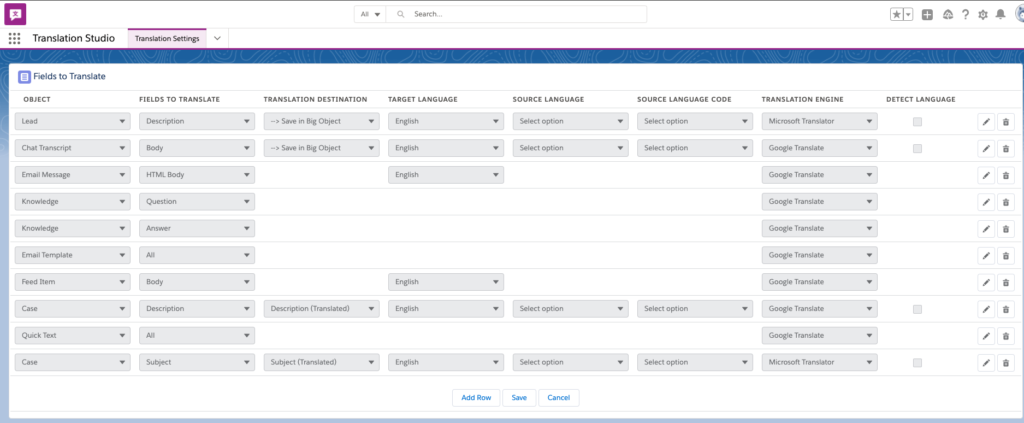Questions to Ask When Choosing a Business Language Translation Software

The success (or failure) of a global business largely depends on its ability to effectively communicate in any language — both internally and externally.
Brands that can communicate with customers across the globe are better equipped to win business and foster loyalty. A report from CSA Research found that 76% of consumers prefer to find product information in their own language. And three-quarters indicate they’re more likely to buy from a brand again if they can receive customer care in their own language.
Of course, the teams within a global brand must also be able to effectively communicate with each other — regardless of location and language. Accurate, effective communication improves internal collaboration and employee satisfaction. And happy, productive employees = delighted customers.
It’s Time to Invest in Business Language Translation Software
Accurate translations are essential for better communication across languages. But copying and pasting text into a translation engine every time you need to translate something isn’t exactly efficient. Rather, it’s time-consuming, and takes your employees away from more important tasks, like delivering great customer experiences.
A better approach is to use business language translation software. The right translation software can break down language barriers and empower you to communicate in any language — both internally and externally.
But finding the right business language translation software can seem overwhelming, especially when you’re not sure what to consider or what questions to ask different vendors. We’ve compiled this list of “must-ask” questions to get you started.
Read on to learn 7 questions every business should ask when choosing business language translation software.
Question 1: Is the language translation software native to Salesforce?
A growing number of brands rely on Salesforce’s solutions — including Service Cloud, Marketing Cloud and Commerce Cloud — to deliver great experiences throughout the customer journey. So it’s probably no surprise that in 2020, Gartner ranked Salesforce as the #1 CRM for the eighth year in a row.
If you run your business on Salesforce, your best bet is to find translation software that’s specifically built for that platform. (We are obviously huge Salesforce fans around here, so if you are considering it, be sure to talk to us!)
Translation software native to Salesforce will integrate seamlessly into your existing processes, which will reduce friction for your teams and your customers. What’s more, using a native translation solution will ensure your customer data never leaves the security of Salesforce.
Question 2: What is the process for implementing the software?
“Implementation” can be a scary word. That’s because some software implementations take weeks or months — and require a lot of internal, technical resources to get up and running. If you’re a global business, you want to break down those language barriers as soon as possible. A long, complicated implementation process simply won’t do.
Be sure to ask the business language translation providers you are considering what the implementation process is like and how quickly you can expect to be up and running with the software. Ideally, the entire process should be extremely easy and require no heavy lifting on your part.
If you’re looking for a solution that’s native to Salesforce, you should be able to purchase your chosen solution on the Salesforce AppExchange, install it, choose your settings and start translating — all without the need for costly development. Some software providers also allow you to give the software a “test drive” before committing to a purchase, so be sure to ask about that, too.
Question 3: What documents can the language translation software translate?
Translation needs vary from business to business. So, make a list of what your company needs to translate. Then, make sure the software solutions you are considering can translate all of those items.
In general, it’s best to choose a robust business language translation software that can translate just about anything in Salesforce including:
- Standard objects
- Custom objects
- Knowledge articles
- Chat
- Reviews
- Marketplace Q&A
- Email templates
- Salesforce metadata
- HTML
You can learn more about translating anything in Salesforce in this recent blog.
Question 4: How do I translate using the software?
Once you’ve installed your chosen software, the translation process should require very little effort. After all, you’re purchasing language translation software to make your life easier, not more difficult!
Be sure to ask translation vendors about the nuts and bolts of the translation process. It should be as simple as choosing what you want to translate, selecting a translation engine and specifying where you want the translation to appear.
Also, ask the vendor if they offer a test run that allows you to play around with the features and functionality of the tool before purchasing.
Question 5: How many languages (and which ones) does the software support?
If you’re a global brand, you’ve got to be able to communicate with customers in a number of different languages. Make a list of the most common languages for your business, and then ask the software providers you are considering if they support those languages.
But don’t limit yourself to just a handful of languages! Today, there are business language software solutions that support over 100 languages, ensuring you’re well equipped to deliver great experiences in just about any language.
Question 6: What engine does the software use to run translations?
Today, there are a number of common, powerful translation engines including Google Translate, DeepL, AWS and Microsoft Translator. Be sure to ask language translation software vendors which translation engine they use.
Ideally, you’ll want to find a software provider that leverages all four. That’s because different engines work better for different languages. Your customer support representative should be knowledgeable about which engines work best in different scenarios, and they’ll be able to help you determine which to use.
Question 7: How much does the software cost?
Of course, you’ve got to find a business language translation software that fits your budget. So be sure to ask about pricing.
If the vendor offers different pricing tiers, make sure you are clear on what is (and isn’t) included in each one. That way, you can run a better apples-to-apples comparison. For example, a business language software provider might offer different pricing tiers that each include a certain number of translations per month.
Also, ask about payment frequency. While some vendors charge per month, others offer the option of paying for the entire year.
And finally, be sure to ask if the vendor offers a free trial or test run to ensure the software is the best fit for your needs.
Start Speaking Your Customers’ Languages with the Right Business Language Translation Software
In order to thrive, global brands must be able to communicate with customers and employees around the world, regardless of language. Now’s the time to invest in a business language translation software that’ll empower you to effectively communicate in any language your customers speak.
Ready to find out how Translation Studio from 1440 can help you start using your customers’ languages — without leaving Salesforce? Find Translation Studio on the AppExchange or request a demo to learn more.
